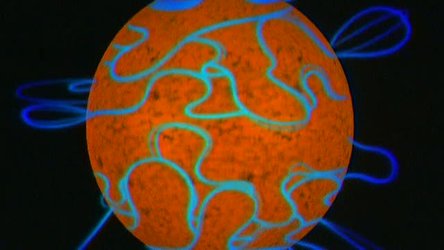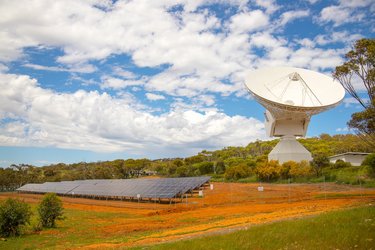Accept all cookies Accept only essential cookies See our Cookie Notice

About ESA
The European Space Agency (ESA) is Europe’s gateway to space. Its mission is to shape the development of Europe’s space capability and ensure that investment in space continues to deliver benefits to the citizens of Europe and the world.
Highlights
ESA - United space in Europe
This is ESA ESA facts Member States & Cooperating States Funding Director General Top management For Member State Delegations European vision European Space Policy ESA & EU Responsibility & Sustainability Annual Report Calendar of meetings Corporate newsEstablishments & sites
ESA Headquarters ESA ESTEC ESA ESOC ESA ESRIN ESA EAC ESA ESAC Europe's Spaceport ESA ESEC ESA ECSAT Brussels Office Washington OfficeWorking with ESA
Business with ESA ESA Commercialisation Gateway Law at ESA Careers Cyber resilience at ESA IT at ESA Newsroom Partnerships Merchandising Licence Education Open Space Innovation Platform Integrity and Reporting Administrative Tribunal Health and SafetyMore about ESA
History ESA Historical Archives Exhibitions Publications Art & Culture ESA Merchandise Kids Diversity ESA Brand Centre ESA ChampionsLatest
Space in Member States
Find out more about space activities in our 22 Member States, and understand how ESA works together with their national agencies, institutions and organisations.
Science & Exploration
Exploring our Solar System and unlocking the secrets of the Universe
Go to topicAstronauts
Missions
Juice Euclid Webb Solar Orbiter BepiColombo Gaia ExoMars Cheops Exoplanet missions More missionsActivities
International Space Station Orion service module Gateway Concordia Caves & Pangaea BenefitsLatest
Space Safety
Protecting life and infrastructure on Earth and in orbit
Go to topicAsteroids
Asteroids and Planetary Defence Asteroid danger explained Flyeye telescope: asteroid detection Hera mission: asteroid deflection Near-Earth Object Coordination CentreSpace junk
About space debris Space debris by the numbers Space Environment Report In space refuelling, refurbishing and removingSafety from space
Clean Space ecodesign Zero Debris Technologies Space for Earth Supporting Sustainable DevelopmentLatest
Applications
Using space to benefit citizens and meet future challenges on Earth
Go to topicObserving the Earth
Observing the Earth Future EO Copernicus Meteorology Space for our climate Satellite missionsCommercialisation
ESA Commercialisation Gateway Open Space Innovation Platform Business Incubation ESA Space SolutionsLatest
Enabling & Support
Making space accessible and developing the technologies for the future
Go to topicBuilding missions
Space Engineering and Technology Test centre Laboratories Concurrent Design Facility Preparing for the future Shaping the Future Discovery and Preparation Advanced Concepts TeamSpace transportation
Space Transportation Ariane Vega Space Rider Future space transportation Boost! Europe's Spaceport Launches from Europe's Spaceport from 2012Latest

The abstract science of the dynamic Sun
Thank you for liking
You have already liked this page, you can only like it once!
The placid appearance of the Sun's surface belies a hot fireball of plasma in constant turmoil. A granular network invisible to the naked eye pervades the solar disc, with cells of hotter and colder plasma popping up, merging and disappearing within only a few hours.
The boundaries between these constantly moving cells are hectic places. Powerful jets of plasma are often launched along the separation lines whenever the cell pattern changes, which may happen as a result of variations in the configuration of the magnetic field – known as ‘magnetic reconnection’.
To learn more about these reconnection jets and the energetic events that cause them, scientists observe the Sun at different wavelengths using a variety of techniques.
This image, which could be mistaken for a piece of abstract art, shows a series of observations performed with the ESA/NASA Solar and Heliospheric Observatory (SOHO) to study the evolution of reconnection jets on a small patch of the Sun’s surface.
The image shows 60 frames taken with the ultraviolet spectrometer SUMER on SOHO over 10 minutes. The individual frames were taken every 10 seconds, so each row of snapshots corresponds to almost three and a half minutes of observations.
Each frame shows a spectrum of the light coming from a small patch on the solar disc: the height of each frame measures 84 000 km, which is about a sixteenth of the Sun’s diameter.
The bright red and yellow regions in each frame correspond to boundaries between different cells in the granular pattern of the Sun. In the first few frames of the series, the shape of the central bright region is roughly vertical, a sign that the underlying boundary was in a quiet state.
After only a couple of minutes, however, the situation changed dramatically: towards the end of the first row and at the beginning of the second row, the shape of the bright region appears stretched towards the right. This shift is characteristic of a jet of plasma that is receding from the observed boundary at a speed of about 100 km/s.
The following snapshots report how the same boundary went back to a quiescent state, then underwent the launch of a new jet and became quiet once again. These rapid changes, and the powerful events causing them, indicate the highly dynamic nature of the Sun’s atmosphere.
The data shown in this image were collected on 28 March 1996 and this image was featured in the series of images “The Sun as Art” published on the SOHO website.
-
CREDIT
ESA/NASA/SOHO/The SUMER team, Max Planck Institute for Solar System Research, Katlenburg-Lindau, Germany -
LICENCE
ESA Standard Licence

An artificial eclipse

Framing Mercury

20 SOHO views of the Sun

Soho - Francais.















 Germany
Germany
 Austria
Austria
 Belgium
Belgium
 Denmark
Denmark
 Spain
Spain
 Estonia
Estonia
 Finland
Finland
 France
France
 Greece
Greece
 Hungary
Hungary
 Ireland
Ireland
 Italy
Italy
 Luxembourg
Luxembourg
 Norway
Norway
 The Netherlands
The Netherlands
 Poland
Poland
 Portugal
Portugal
 Czechia
Czechia
 Romania
Romania
 United Kingdom
United Kingdom
 Sweden
Sweden
 Switzerland
Switzerland
























